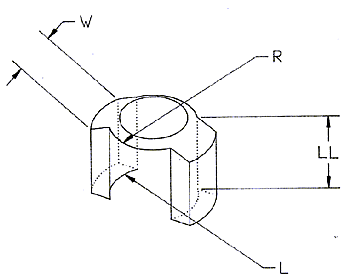trying to find or figure out a formula for calculating bolt thrust
i already know the formula for calculating bolt thrust, so i dont need that regurgitated from the same 5 web pages
just because the pure math says its "x", just because its a 50k cartridge does that mean that exactly 50k actually pushes on the bolt face/lugs
that formula doesnt take into account the brass gripping the chamber walls
brass expansion
does the case head aid in distribution of bolt thrust force in other directions
info of that nature, or is there no other way but to sent it out to a cartridge testing center to get actual data
thanks
i already know the formula for calculating bolt thrust, so i dont need that regurgitated from the same 5 web pages
just because the pure math says its "x", just because its a 50k cartridge does that mean that exactly 50k actually pushes on the bolt face/lugs
that formula doesnt take into account the brass gripping the chamber walls
brass expansion
does the case head aid in distribution of bolt thrust force in other directions
info of that nature, or is there no other way but to sent it out to a cartridge testing center to get actual data
thanks


